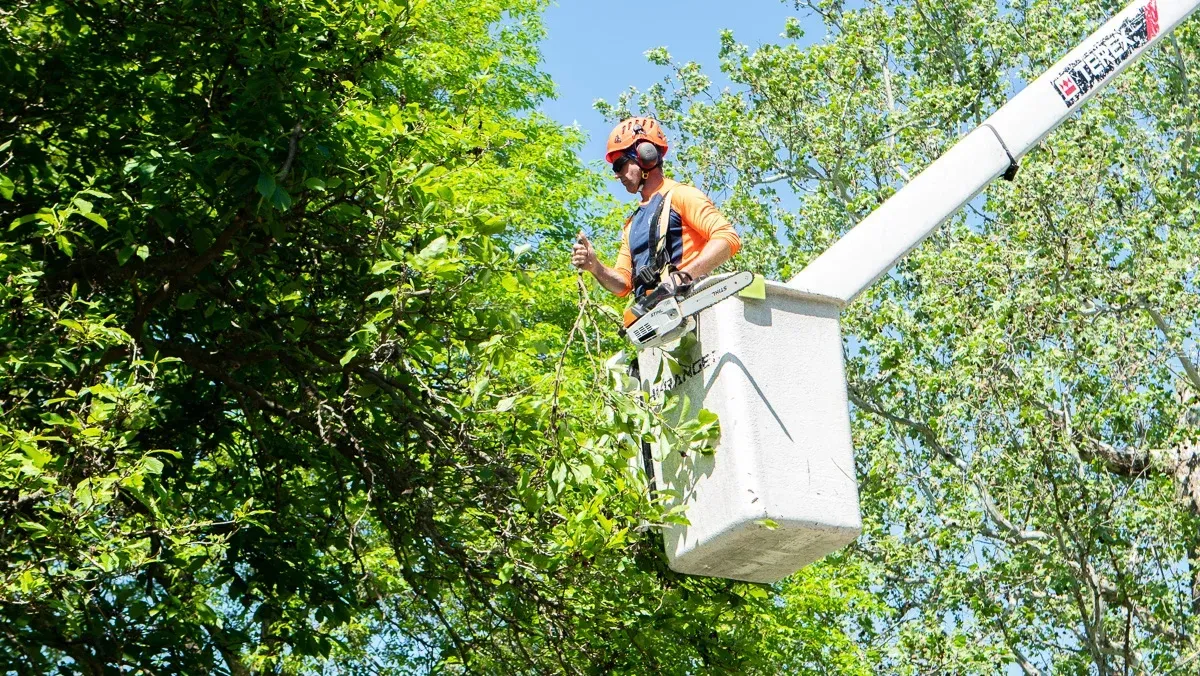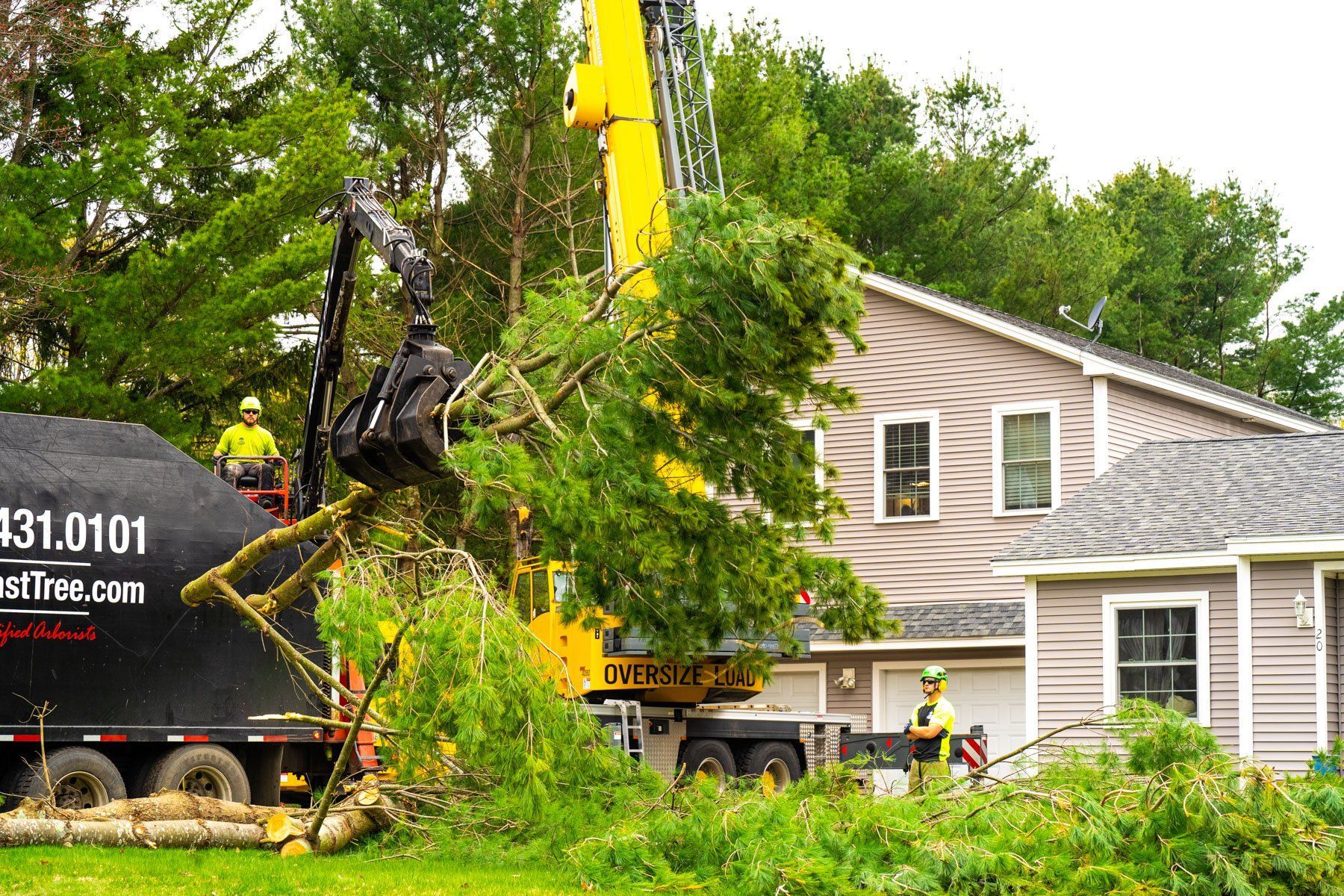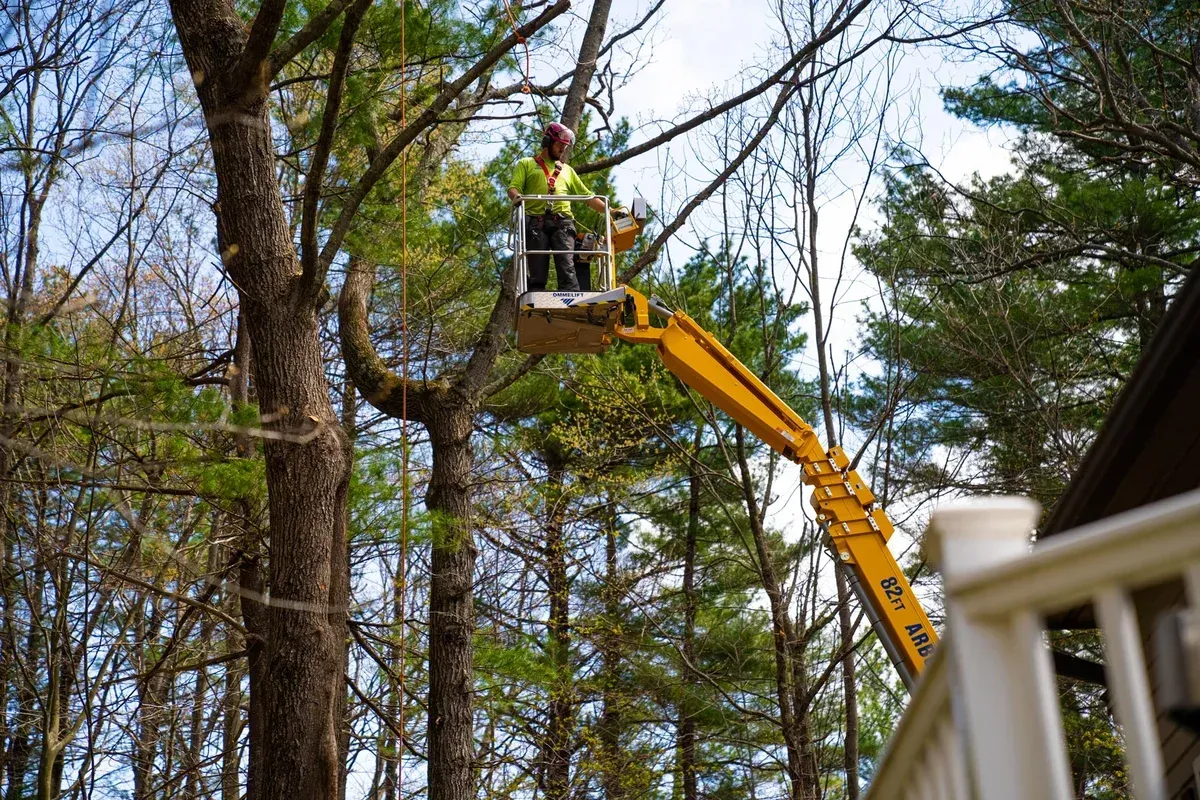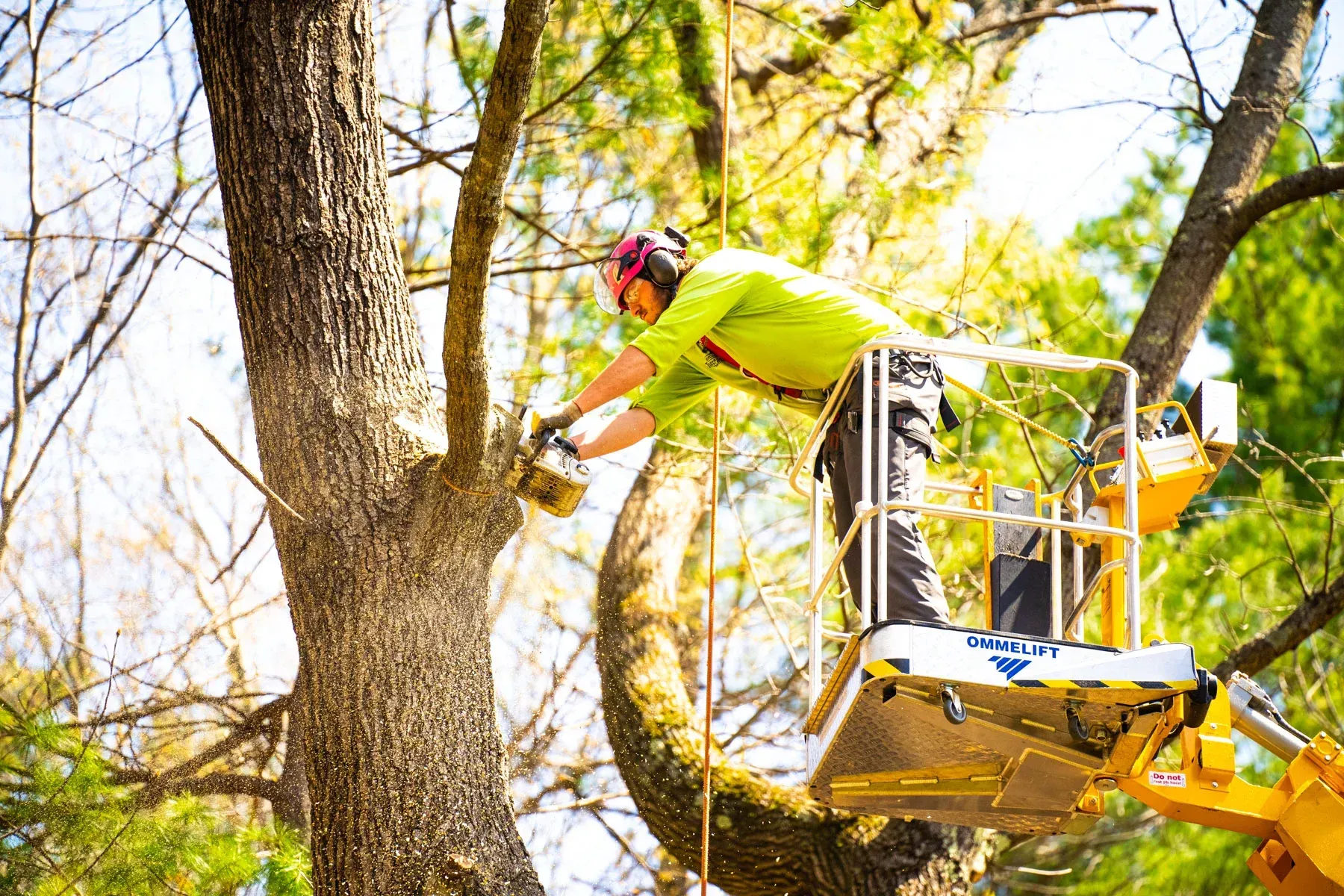Tree Take Down vs. Tree Trimming: Which Tree Service Is Right for You?

Maintaining a beautiful and healthy landscape requires regular tree care. But when is tree removal services necessary, and when is professional tree trimming the better option? Understanding the difference can help you protect your property, ensure safety, and enhance curb appeal.
In this guide, we’ll break down the key differences between
tree cutting, trimming, and removal so you can make the best decision for your trees.
Understanding Tree Removal Services
Sometimes, a tree becomes more of a hazard than an asset. When a tree is dead, dying, or posing a threat to your home, tree removal services may be the only solution.
Signs You Need Tree Removal Services
If you're unsure whether a tree should be removed, look for these warning signs:
- Dead or Diseased Trees – A tree with extensive decay, dead branches, or missing bark may be beyond saving.
- Structural Damage – A tree that leans dangerously toward your home or power lines could be a safety risk.
- Root Damage – If roots are lifting sidewalks or affecting your foundation, removal may be necessary.
- Storm Damage – Trees severely damaged by storms can be a hazard, especially if large limbs are at risk of falling.
When trees pose risks like these, it's best to consult professionals for safe and efficient tree cutting.
What to Expect from Tree Removal Services
When we handle tree removal services, we take several precautions to ensure safety:
- Inspection and Assessment – We evaluate the tree's health and determine the best removal approach.
- Strategic Cutting – Using specialized equipment, we remove the tree in sections to prevent damage to surrounding structures.
- Cleanup and Disposal – We clear all debris and can even provide stump grinding services upon request.
While tree removal is sometimes necessary, not every tree needs to come down. In many cases, professional tree trimming can keep your landscape safe and visually appealing.
The Benefits of Professional Tree Trimming
Regular professional tree trimming can extend the life of your trees while improving their appearance. This process involves strategically cutting back overgrown, weak, or unhealthy branches to promote proper growth.
Why Tree Trimming Is Important
Trimming is essential for both the health of your trees and the safety of your property. Here’s why:
- Encourages Healthy Growth – Removing dead or diseased branches allows trees to thrive.
- Enhances Safety – Overgrown branches can be a hazard, especially during storms.
- Improves Sunlight and Airflow – Thinning branches allow sunlight to reach lower leaves, promoting healthy development.
- Boosts Curb Appeal – A well-maintained tree adds beauty and value to your property.
Types of Tree Trimming
Not all trimming is the same. Different techniques are used based on the tree's needs:
- Crown Thinning – Removing select branches to increase light penetration and air circulation.
- Deadwood Removal – Eliminating dead or dying branches to reduce risks.
- Shaping and Pruning – Trimming trees to maintain an aesthetically pleasing form.
- Structural Pruning – Removing weak or poorly attached limbs to prevent future breakage.
Routine professional tree trimming helps trees flourish while preventing costly removal in the future.
How to Decide Between Tree Removal and Tree Trimming
Choosing between tree removal services and trimming depends on the tree's condition and location. Ask yourself the following questions:
- Is the tree healthy? If a tree is thriving but has overgrown branches, trimming is the best option.
- Does the tree pose a danger? If a tree is leaning, structurally compromised, or too close to power lines, removal may be necessary.
- Are the roots causing damage? Trees with invasive roots that disrupt sidewalks or plumbing may need to be taken down.
- Is the tree affecting property value? Well-maintained trees add value, but a dying or unsightly tree can negatively impact curb appeal.
When in doubt, consulting a tree care expert can help determine the right approach.
The Cost of Tree Cutting and Trimming
Tree care costs vary based on the size of the tree, the complexity of the job, and the equipment required. Here’s a general breakdown:
Tree Removal Services Costs
The cost of tree removal services depends on several factors, including tree height, location, and potential hazards. Removal generally ranges from $300 to $2,500 per tree, with large trees costing more.
Professional Tree Trimming Costs
Trimming is typically more affordable than full tree cutting. The price can range from $75 to $1,000 per tree, depending on its size and condition.
Investing in professional tree trimming regularly can prevent the need for expensive removal later on.
Why Hire Professionals for Tree Care?
Tree work is dangerous and requires specialized knowledge and equipment. Here’s why hiring a professional matters:
- Safety – Removing or trimming trees without the proper tools can be hazardous.
- Expertise – We assess tree health and use the right techniques to ensure long-term growth.
- Proper Equipment – Professional-grade saws, lifts, and safety gear ensure efficient service.
- Cleanup Services – We handle debris removal, leaving your yard clean and safe.
DIY tree cutting can lead to accidents, property damage, and costly mistakes. Trusting experts ensures the job is done right.
Choosing the Right Tree Service for Your Needs
Keeping your property safe and beautiful means knowing when to choose tree removal services and when professional tree trimming will suffice.
- Choose trimming if your tree is healthy but needs shaping or hazard reduction.
- Opt for removal if the tree is dead, diseased, or poses a serious safety risk.
At McIntyre’s Tree Service, we provide expert tree cutting, removal, and trimming to keep your landscape in top shape. Whether you need routine maintenance or urgent tree removal, our team is here to help.
Contact us today at
610-762-0660 or email us at
mcintyrestreeservice@gmail.com to schedule a consultation!
Frequently Asked Questions
1. When should I consider professional tree trimming for my property?
Regular professional tree trimming is essential for maintaining tree health and safety. If your trees have overgrown branches, show signs of disease, or interfere with power lines, it’s time to schedule trimming. Proper pruning encourages healthy growth, prevents hazards, and enhances curb appeal.
2. What are the benefits of hiring tree removal services?
Hiring tree removal services ensures safe and efficient removal of dead, diseased, or hazardous trees. Professional removal prevents property damage, reduces safety risks, and eliminates the hassle of dealing with large tree debris on your own.
3. How does tree cutting differ from tree trimming?
Tree cutting refers to completely removing a tree from the property, while professional tree trimming involves selectively pruning branches to maintain tree health and structure. If a tree is healthy but overgrown, trimming is the best option. However, if a tree is dying or causing damage, tree removal services may be necessary.
4. What factors affect the cost of tree removal services?
The cost of tree removal services depends on tree size, location, and accessibility. Larger trees or those near structures require specialized equipment and expertise, increasing the overall price. Additional services, such as stump grinding, can also affect the final cost.
5. Can tree cutting improve the safety of my home?
Yes! Strategic tree cutting removes dangerous limbs or entire trees that could fall and cause damage. If a tree is leaning, has weak branches, or is too close to your home, removing it can prevent costly repairs and enhance overall safety.



